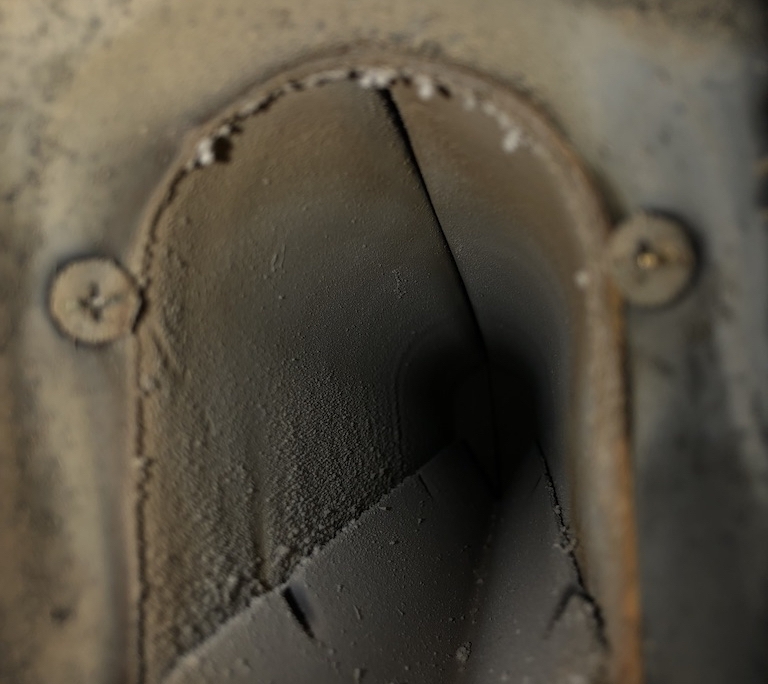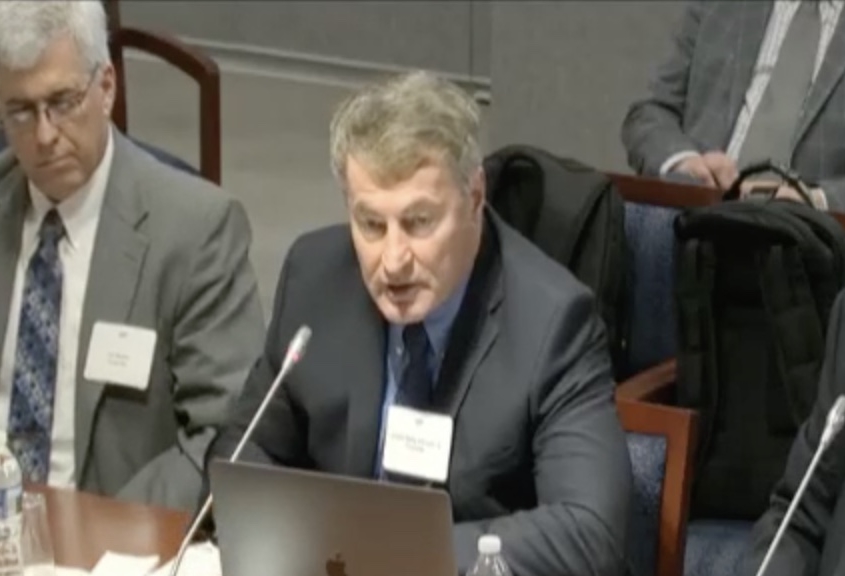Can I Sue Landlord for Carbon Monoxide Poisoning?
Yes. You can sue landlord for carbon monoxide poisoning if the landlord is at fault. How do I know if my landlord was at fault? Carbon monoxide poisoning should never happen in an apartment, so if it happens, then someone was at fault. In most states, the landlord is responsible for the fault of any of those people who do work in your apartment, so the chances are good that your landlord also has responsibility. Attorney Gordon Johnson has success suing landlords for fault in rentals, including a $20 million settlement after three weeks of trial in Texas in 2018.
Who else could be at fault for carbon monoxide poisoning in my apartment?

When can you sue landlord for Carbon Monoxide Poisoning? When the carbon monoxide poisoning comes from a poorly maintained furnace, especially if that furnace is past its useful life. Shown here is the inside of a heat exchanger. Cracks in heat exchangers, especially older furnaces, can cause toxic carbon monoxide leaks.
Any company that was responsible for managing or maintaining the apartment. Most apartment carbon monoxide poisonings come from furnaces, which should only be maintained by licensed HVAC contractors. Unfortunately, in most large apartment complexes, the landlord or management company thinks they are qualified to maintain the furnace without licensed contractors. In almost all cases, non-licensed maintenance workers do not know how to do more than change filters or perhaps clean the burners. The older the furnace in your apartment is, the more it needs a licensed HVAC contractor to maintain it. If the furnace in your apartment is more than 25 years old, it should be replaced. If the landlord or management company just keeps replacing parts, they are risking the tenants safety by doing that.
Can I sue the Management Company for Carbon Monoxide Poisoning in my Apartment?
Yes. If the landlord has hired a professional management company to manage the apartment complex, that company has taken on most of the responsibilities of the landlord, which include making sure the furnace in your apartment is safe. While the landlord may still be liable, the management company has independent liability for its own mistakes and negligence. Understaffing the maintenance department or believing that non-licensed maintenance techs are qualified to maintain furnaces is evidence of negligence. That type of negligence is often the cause of CO poisoning in an apartment.
Can an HVAC contractor be sued for CO poisoning in my apartment?
Yes. If your apartment complex has a service contract with a licensed HVAC contractor to do seasonal maintenance on your furnace, then the HVAC contractor may be liable for carbon monoxide poisoning that comes out of the furnace. Mistakes we routinely see from HVAC contractors include failure to do proper inspections, failure to check for CO in the exhaust of furnaces, failure to properly inspect for cracked heat exchangers. One area of regular negligence of HVAC contractors is failure to “red tag” a furnace that is faulty. Red tag means to shut it off so that it cannot be used until it is repaired or replaced. Too many times some vague warning is given to the landlord and management company that does not make it clear that this furnace must be replaced.
Is it negligent to fail to replace an apartment furnace that is more than 30 years old?
Attorney Gordon Johnson, author of this page testifying to the U.S. Consumer Products Safety Commission about the dangers of carbon monoxide poisoning.Yes. We believe that failure to replace furnaces that are older than 30 years in negligent on its face. If your apartment complex is 30-40 years old and it has an older furnace in it, odds are that furnace is past its life expectancy. The life expectancy of most furnaces built in the 1980’s or before is 25 years. When a furnace gets past its life expectancy, the chances that a cracked heat exchanger will cause carbon monoxide poisoning is significant. Large apartment complexes should have budgeted the replacement of all furnaces older than 25 years of age and if they haven’t, they are allowing profits to be more important than your safety. See this recommendation from an HVAC firm.

Attorney Gordon Johnson testifying to the CPSC about the dangers of carbon monoxide poisoning in 2017. Click here for more about Attorney Johnson.
The United States Consumer Products Safety Administration (CPSC) has implicitly not found that furnaces that are older than 1987 are too old to even be included in its study of the significant risk of CO poisoning from furnaces.
Representatives from the Gas Appliance Manufacturers Association (GAMA) and other subcommittee members asserted that the incidents discussed in these reviews (prior to 1987) did not involve “modern” furnaces, but rather, older appliances. They also asserted that “modern” furnaces did not pose the CO exposure risks from the failures or conditions reported in the CPSC incident reviews. Click here for that research.
And that position was taken by GAMA in 2012 when those furnaces could have been only 25 years old. See also this 2002 paper from the CPSC.
Failure to check for cracked heat exchangers is negligence.
